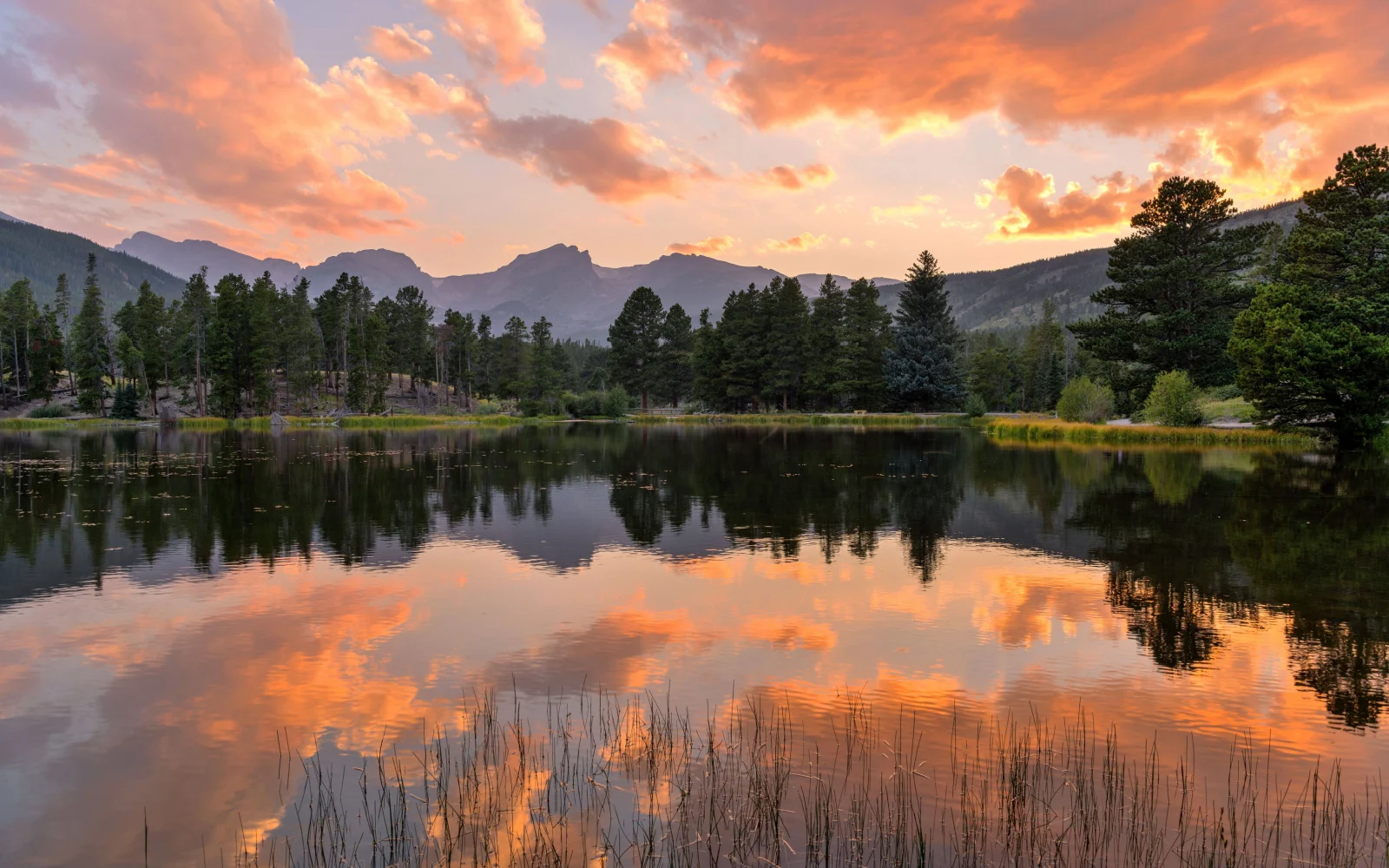What's the best time to visit Rocky Mountain National Park?
The best time to visit Rocky Mountain National Park is during summer, from June to August, for warm weather, accessible trails, and vibrant wildflowers, despite cooler nights due to high elevation. This period allows for unique activities and driving on Trail Ridge Road, while early fall offers stunning foliage and elk viewing but requires timed entry reservations.
Rocky Mountain National Park, nestled in the iconic Rocky Mountain range, is one of Colorado’s most beautiful national parks. Many visitors take in the spectacular scenery from Trail Ridge Road, the highest paved road in the United States, which takes you through the beautiful mountains.
Get your hiking boots dirty on the miles of trails for all skill levels, like the ones leading to Gem Lake and other alpine lakes. The park also has original pioneer cabins like the Holzwarth site, adventure activities, and wildlife spotting opportunities.
Rocky Mountain National Park is one of the most popular parks in the United States, despite its harsh nature. Keep reading for a guide on the best time to visit for good weather and good trails.
Overall Best Time to Visit Rocky Mountain National Park
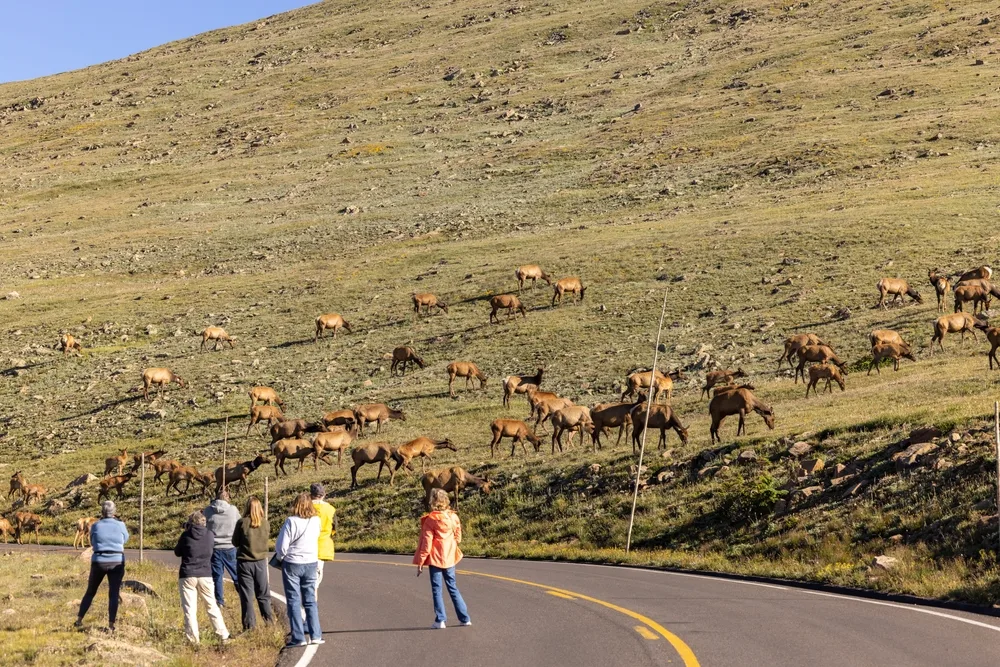
Rocky Mountain National Park, Colorado United States – July 20 2022: Elk herd crosses the Trail Ridge Road/Jennifer McCallum/Shutterstock
The best time to visit Rocky Mountain National Park is in the summer, June to August, when the park is accessible to visitors and temperatures are more comfortable for exploring.
Keep in mind that Rocky Mountain National Park is located at a very high elevation. The entire park is more than 7,000 feet above sea level, and some parts, like the Alpine Visitor Center, are located at a whopping 11,796 feet above sea level.
The high elevation means the weather is harsh, and winter lasts for a long time. Summer offers a brief but glorious window of warmer weather. Daily high temperatures are in the 70s and 80s.
At night, the temperature can drop by 10–20 degrees Fahrenheit, and you can expect near-freezing temperatures at high altitudes even in June and September. Despite the chill, this is the best time weather-wise to explore the park.
The warmer temperatures mean that you have a brief window when even the alpine trails are finally free of snow. This is also the only time to drive on Trail Ridge Road, which only opens to visitors in mid-May and usually closes to drivers by mid-October.
The ease of getting around makes visiting in the summer open. The mountains are also uniquely beautiful during this time.
Due to the late thaw, alpine flowers start blooming only in June, so you can see beautiful wildflowers in the middle of summer. The lush landscapes are perfect for photographs.
You also have more options for activities in the summer, which is a boon if you are visiting with kids. You can try horseback riding, cycling, and more. The Junior Ranger program is also a popular program.
Kids can fill out booklets all year round, but Junior Ranger Headquarters with additional activities is only open from June to August. History buffs should visit Holzwarth Historic Site, whose preserved buildings are only open from Memorial Day to Labor Day.
Early fall is another popular time to visit Rocky Mountain National Park, so much so that the park requires timed entry reservations until the end of October.
The leaves begin to turn by the end of August, and the foliage display is truly spectacular. September to October is elk rutting season, when you can spot these amazing animals at their most primal.
Cheapest Time to Visit Rocky Mountain National Park
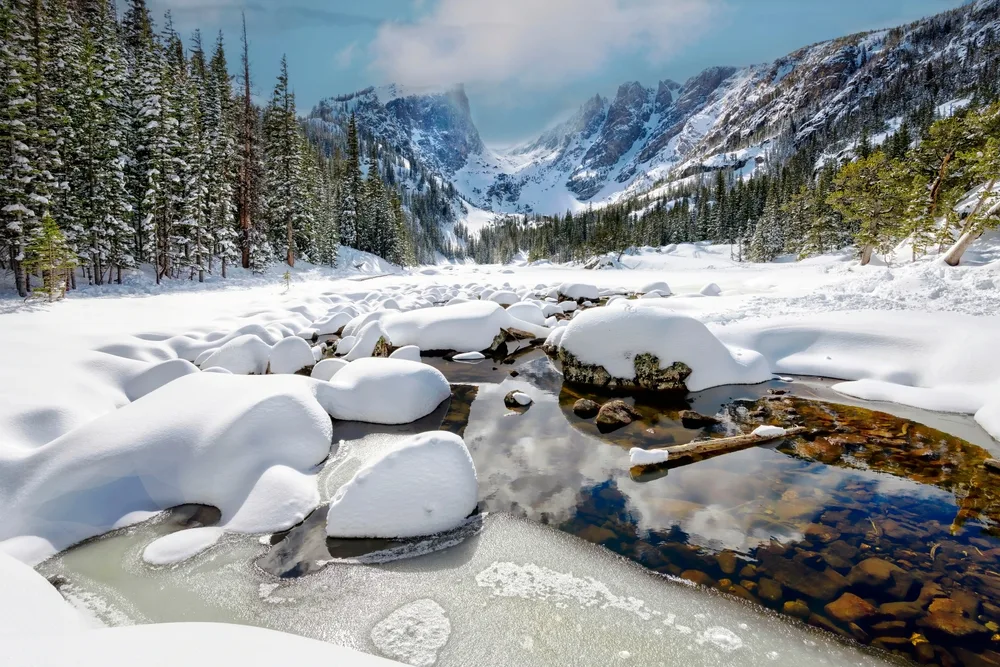
John Couture/Shutterstock
The cheapest time to visit Rocky Mountain National Park is in the winter or spring (November–May), but the savings may not be worth the logistical hassle.
Accommodation options near Rocky Mountain National Park are significantly cheaper during the winter and spring off-season. In nearby Estes Park, accommodation rates are usually 20%–35% cheaper during the spring and even more affordable during the dead of winter.
However, if you were hoping to stay within the park itself, you are out of luck during the off-season. Unlike many parks, Rocky Mountain National Park doesn’t have any lodges or hotels within park grounds.
Your only option to stay in the park is the campgrounds, but only Aspenglen Campground is open during the winter. However, camping fees are $5 cheaper than during the summer—if you are willing to brave winter camping.
The closest airport to Rocky Mountain National Park is Denver International Airport. The cheapest time for flights is late winter and early spring, once the skiing season dies down and summer hasn’t started yet.
You may be able to negotiate a discount on car rentals during this time. However, some costs associated with visiting the park stay the same all year.
Entry fees are the same all year round. Since you won’t be able to save significantly by visiting during the off-season and will have to face closures within the park and formidable weather, it’s worth thinking whether visiting during the winter is worth it.
Least Busy Time to Visit Rocky Mountain National Park
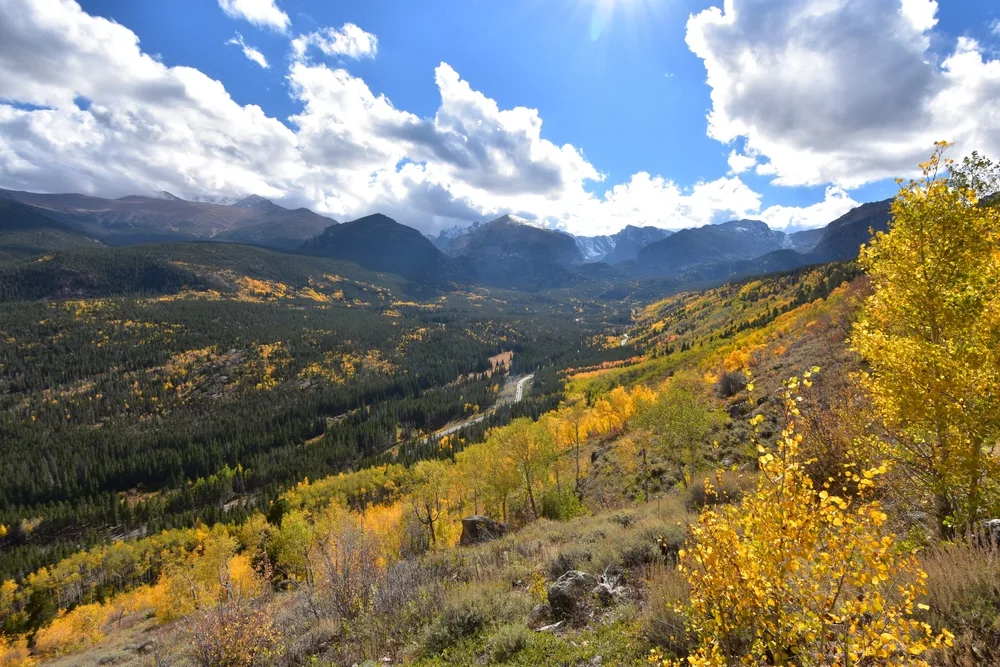
P.A.12/Shutterstock
The least busy time to visit Rocky Mountain National Park is from November to May (winter/spring), which requires some extra preparation but is very rewarding.
Rocky Mountain National Park seems to only have two seasons for visitors—crowded and not crowded. The summer and autumn bring so many visitors that the park instituted a timed entry reservation system from May to October.
Outside of those months, visitor numbers are drastically lower. Weather during this time is consistently cold, as winter at high elevations lasts from September to early May.
Expect plenty of snow even in April! The trails may be less passable, but winter is a great time to visit for unique activities. There are still ranger-led programs like snowshoe walks, talks, ice fishing, and wildlife tracking.
Since so much of the year in the park is eaten up by winter, it makes sense that authorities try to organize activities even during the coldest season. As long as you wear sturdy winter gear and are prepared for the hardships of getting outside during this season, you can enjoy plenty of cold-weather activities.
If you like skiing or similar sports, this is the best time for you to visit. Popular activities include:
- Snowshoeing
- Cross-country skiing
- Sledding
- Ice fishing
- Wildlife watching
Worst Time to Visit Rocky Mountain National Park
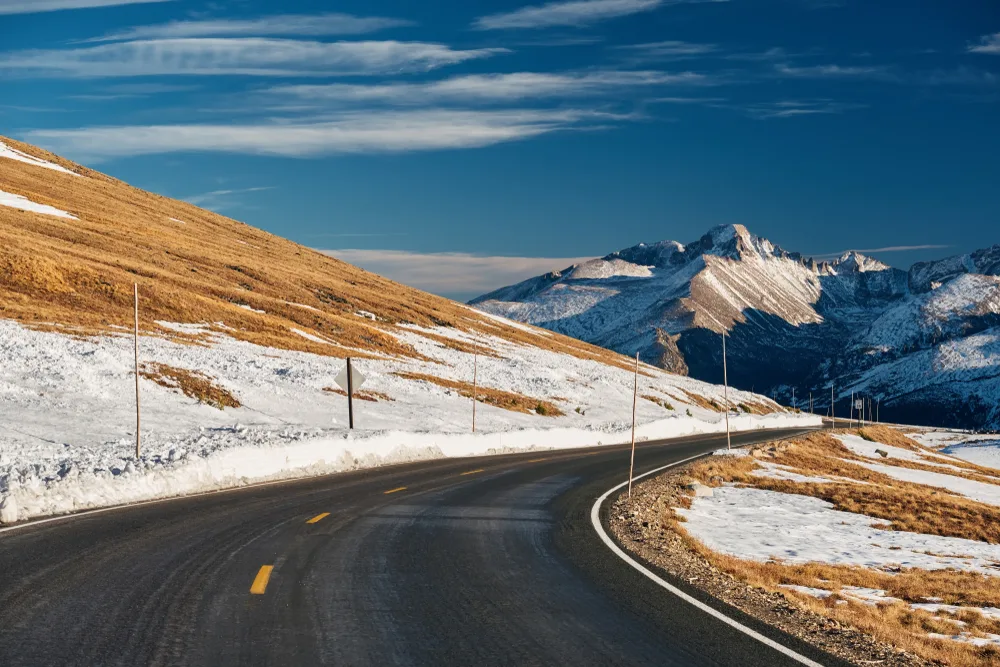
Haveseen/Shutterstock
The worst time to visit Rocky Mountain National Park is during the spring months of March, April, and early May, as the weather is still cold and conditions are unpleasant.
Spring is a bit of a misnomer for the park. Due to the high elevations, temperatures are still quite cold even in early May, so don’t expect to shed your bulky winter layers. April still sees significant snowfall.
The wildflowers don’t even arrive until June, which marks the start of summer at lower elevations. Temperatures are a bit warmer at lower elevations, but that causes more problems than solutions.
Locals call this “mud season,” as temperatures are just warm enough for the snow to melt and turn trails and roads into muddy sludge.
You can’t cross-country ski on melting snow, and conditions are too messy for hiking. If you’re willing to brave the mud, pack cold weather gear, and bring a good sense of humor, you can explore the park with very few visitors around.
Your only companions may be the many wildlife babies, as local species have their calving season at this time. Just be sure to stay very far away from moose calves—as adorable as they are, the mother moose is usually less cute and far more aggressive.
Rocky Mountain National Park by Month: Climate & Activities
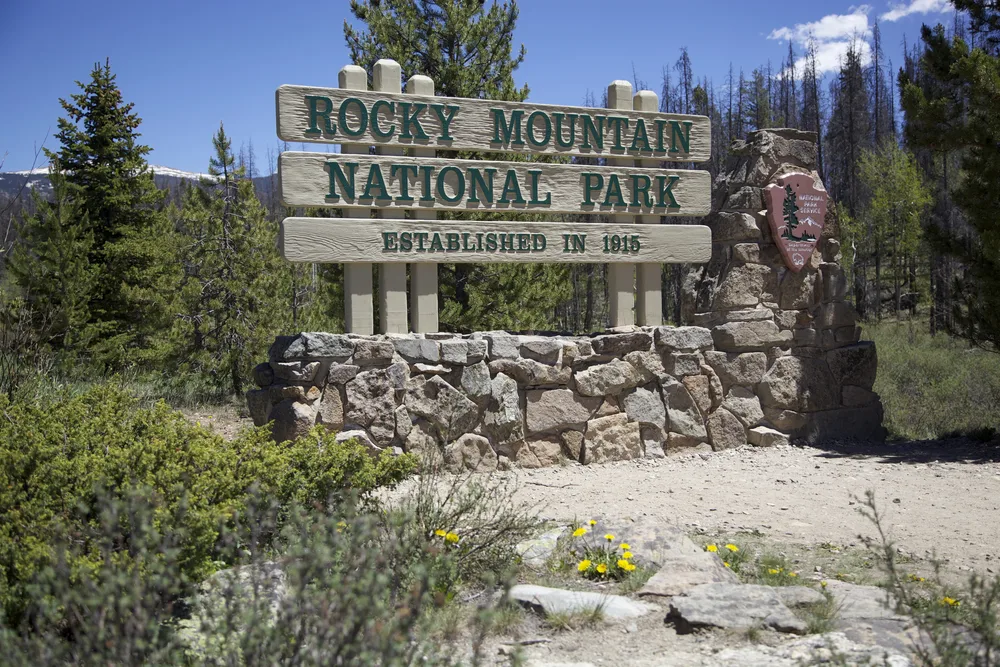
TM Creations/Shutterstock
Still unsure about the best time to visit Rocky Mountain National Park? Take a look at our summary of the weather and climate by month below:
January
January in Rocky Mountain National Park, with temperatures often between 9 to 31°F (-13 to -1°C), is a winter wonderland. It’s perfect for snowshoeing in the quiet wilderness, spotting wildlife in their winter habitat, and enjoying the serene beauty of frozen lakes and snow-covered peaks.
February
February continues the snowy splendor, ideal for cross-country skiing on the park’s many trails, photographing the stunning winter landscapes, and participating in ranger-led programs to learn about the park’s winter ecology.
March
As the snow begins to thaw, March offers temperatures ranging from 18 to 38°F (-8 to 3°C). This month is great for late winter hikes, catching the early signs of spring, and visiting the park’s visitor centers for educational exhibits and information.
April
April’s milder weather, with temperatures between 23 to 48°F (-5 to 9°C), beckons for tranquil drives along Trail Ridge Road as it begins to open, witnessing the awakening of the park’s flora and fauna, and enjoying clearer skies for stargazing.
May
May brings warmer days, from 32 to 60°F (0 to 16°C), perfect for hiking trails like Bear Lake and Emerald Lake, exploring the park’s lower elevations which bloom with spring wildflowers, and enjoying the scenic beauty of Moraine Park.
June
June, welcoming summer with temperatures between 40 to 71°F (4 to 22°C), offers ideal conditions for wildlife viewing, including elk and bighorn sheep, hiking to alpine lakes, and attending educational ranger-led walks and talks.
July
July’s warmth, with temperatures from 46 to 77°F (8 to 25°C), is all about exploring the park’s vast trail network, enjoying picnics amidst breathtaking scenery, and taking part in the park’s Night Sky Programs.
August
In August, with temperatures of 45 to 76°F (7 to 24°C), hike the higher elevation trails like those in the Wild Basin area, enjoy wildflower viewing, and experience the awe-inspiring views from the Alpine Visitor Center.
September
Welcoming fall, September, with temperatures from 38 to 70°F (3 to 21°C), is perfect for witnessing the elk rutting season, enjoying the spectacular fall colors, and hiking in areas like the Horseshoe Park for a less crowded experience.
October
October’s cooler days, from 27 to 60°F (-3 to 16°C), are ideal for crisp autumn hikes, experiencing the park’s quieter side after the summer crowds have left, and enjoying the stunning vistas from places like the Many Parks Curve.
November
November, as the chill sets in, temperatures from 19 to 48°F (-7 to 9°C), is a time for peaceful drives through the park, capturing the early winter snowfalls on camera, and enjoying the solitude that the off-season brings.
December
December brings a peaceful winter landscape, with temperatures ranging from 9 to 37°F (-13 to 3°C). This month is perfect for snowshoeing in serene settings, cozying up in nearby Estes Park, and enjoying the quiet beauty of the Rocky Mountains in winter.
Frequently Asked Questions
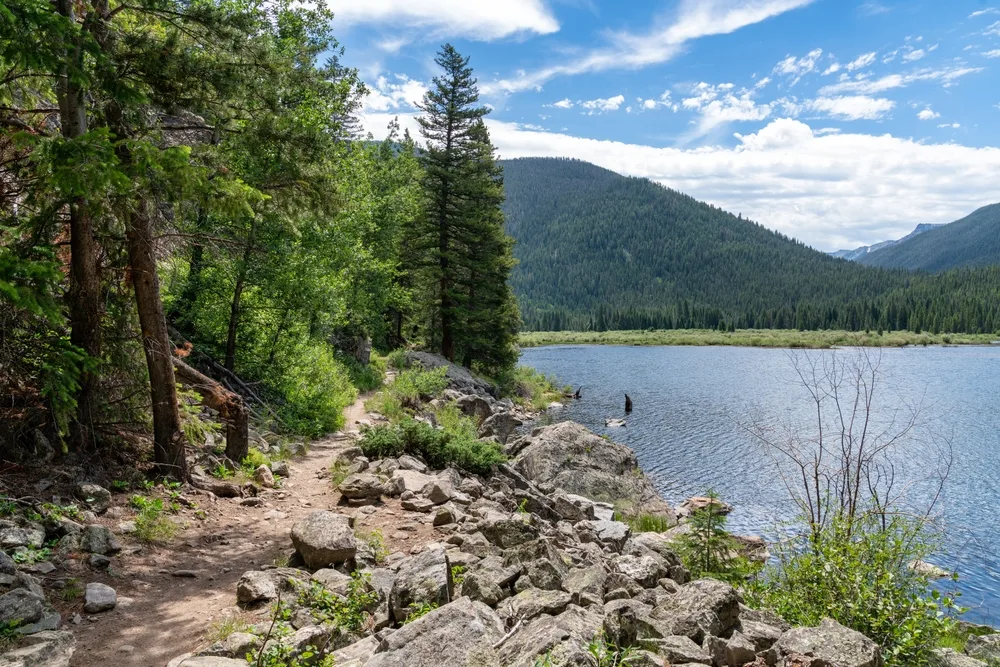
Skostep/Shutterstock
These top questions can give you even more information about visiting Rocky Mountain National Park:
What is the best time to go to the Rocky Mountains?
The best time to go to the Rocky Mountains is in the summer because that’s the only time conditions are more hospitable at these high elevations.
How many days do you need for Rocky Mountain National Park?
Nature lovers will want to spend at least three days in Rocky Mountain National Park, but many visitors just drive the Trail Ridge Road and take a few short trails in one day.
What is the least busy day in Rocky Mountain National Park?
The least busy days are off-season weekdays. Tuesdays and Wednesdays have the fewest visitors because there are no longer people there on long weekend trips.
What is the hottest month in the Rocky Mountains?
July is the hottest month in the Rocky Mountains, although even then, temperatures are rarely hotter than 80 degrees.
How much money is needed to go to Rocky Mountain National Park?
The entry passes cost $30 for a one-day pass and $35 for a seven-day pass. Of course, accommodations and getting there will add to the cost of your trip.
So, What’s the Best Time to Visit Rocky Mountain National Park?
The best time to visit Rocky Mountain National Park is during the summer when weather conditions are enjoyable and all of the park is open to visitors. The crowds are worth it to get the full experience.
So, with so much to see and do and plenty of amazing times to visit, what are you waiting for — book your trip today and experience for yourself all that Rocky Mountain National Park has to offer. Happy travels!



